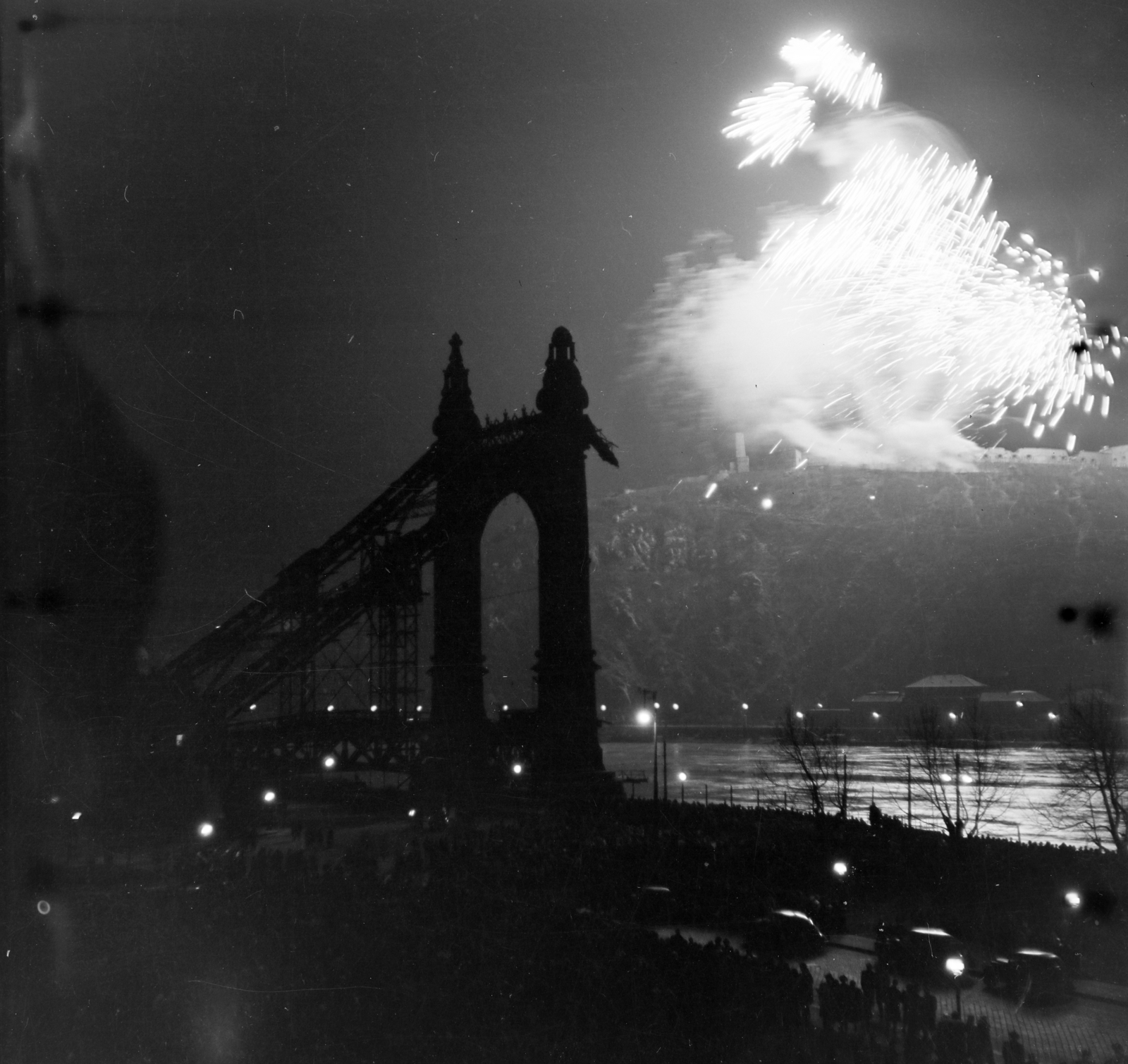The History of New Year’s Eve Celebrations in Budapest: A Journey Through Time

Today, New Year’s Eve is synonymous with grand celebrations, lively parties, and spectacular fireworks lighting up the sky. From house parties to glamorous events at top venues, it’s a night where people around the world gather to bid farewell to the old year and welcome the new one with hope and excitement. But have you ever wondered how New Year’s Eve was celebrated in Budapest in the past? How did these traditions evolve over time to become what they are today? Let’s take a journey through the history of New Year’s Eve in Budapest, exploring the origins and transformations of this beloved holiday.

Photo by Fortepan – Privát Fotó és Film Archívum-Höfler Tibor gyűjtemény 1931
The Origins of New Year’s Eve: A Saint and a Celebration
The roots of New Year’s Eve, or “Szilveszter” as it is called in Hungary, can be traced back to the 4th century. The holiday is named after Saint Sylvester, a Pope who lived during this period and passed away on December 31st. Though he may not be the most well-known figure in history, the time of his papacy marked a significant turning point for Christianity, as Emperor Constantine the Great ended the persecution of Christians and elevated the Church to a prominent position within the Roman Empire.
For many centuries, the end of the year was not universally celebrated on December 31st. In fact, various cultures marked the end of the year at different times, often tied to significant seasonal changes. In Hungary, the early Hungarians, like many nomadic tribes, marked the passage of time by the seasons, celebrating the end of the year in the spring or autumn, when the livestock were moved between pastures. The transition of the seasons was more significant than the start of a new calendar year.

Photo by Librarius
The Moveable Feast: Celebrating New Year’s in Different Eras
New Year’s Eve was a moveable feast for a long time, with the date of the celebration shifting over the centuries. In some periods, it was celebrated on January 6th, the day of Epiphany, while in others, it coincided with Christmas. This all changed in 1691 when Pope Innocent XII declared that the new year would officially begin on January 1st, aligning with the calendar reforms of earlier centuries that had introduced the Julian calendar.
The choice of January as the start of the new year has deep historical roots, dating back to ancient Rome. Julius Caesar, when reforming the Roman calendar, dedicated the first month of the year to Janus, the god of beginnings and transitions. Janus, with his two faces looking both to the past and the future, symbolized the perfect moment to reflect on the past year and look forward to the new one. Romans celebrated this occasion with sacrifices, gift exchanges, and festive decorations, setting a precedent for the New Year’s celebrations that would spread across the world.

Photo by Fortepan – az MTV stúdiója, a felvétel a Cédula a telefonkönyvben című tv-film forgatásakor készült. 1961
Feasts and Festivities: The Evolution of New Year’s Eve Traditions
The grand feasts and lively celebrations we associate with New Year’s Eve have their origins in ancient Roman traditions, particularly the Saturnalia festival. This festival was a time of merriment and indulgence, where even slaves were allowed to partake in the festivities. The tradition of celebrating with large meals, music, and dancing has endured through the ages, becoming a staple of New Year’s Eve celebrations.
In Hungary, as in many other cultures, New Year’s Eve was once a time for agricultural and fertility rituals. In some regions, it was customary to “turn the flock” on New Year’s Eve—literally turning every animal in the herd from one side to the other to ensure fertility and prosperity in the coming year. Another fascinating tradition was dream interpretation, where people would try to predict the events of the coming year based on their dreams on New Year’s Eve. In this context, falling asleep during the celebrations wasn’t seen as a faux pas, but rather as an opportunity to glimpse the future.

Photo by – Fortepan – Nagy Gyula 1971
From Tradition to Modernity: New Year’s Eve in the 20th Century
As time progressed and Budapest became a modern European city, New Year’s Eve celebrations evolved, incorporating more contemporary elements. By the early 20th century, it was common for people to gather in city squares, attend concerts, or enjoy a night out in one of Budapest’s many cafés and restaurants. The tradition of making noise to ward off evil spirits—once done with horns and whips—was replaced by the loud bangs of fireworks that now illuminate the city’s skyline every year.

Photo by – Fortepan – Keveházi János 1955
In the post-war years, New Year’s Eve became increasingly associated with large public gatherings and events. Iconic locations like Vörösmarty Square and the Danube River became popular spots for people to come together and watch the midnight fireworks. The introduction of television also brought new traditions, such as watching the President’s New Year’s address, which became a fixture of the holiday in households across the country.

Photo by Fortepan – szilveszteri TV műsor felvétele a Petőfi Csarnokban. 1986
Modern Celebrations: New Year’s Eve in Budapest Today
Today, New Year’s Eve in Budapest is a vibrant blend of old traditions and modern festivities. The city offers a wide range of activities for locals and tourists alike, from elegant dinners and classical concerts to river cruises along the Danube, where revelers can enjoy the city’s stunning architecture illuminated against the night sky.
Fireworks continue to be a major attraction, drawing crowds to the banks of the Danube and the city’s many viewpoints to witness the dazzling displays that mark the stroke of midnight. The celebrations often continue well into the early hours, with bars, clubs, and restaurants offering special New Year’s Eve menus and entertainment.
While the way we celebrate New Year’s Eve has changed over the centuries, the spirit of the holiday—marked by joy, reflection, and the hope for a prosperous year ahead—remains as strong as ever. Whether you’re enjoying a quiet night in with loved ones or joining the throngs of people in Budapest’s lively streets, New Year’s Eve is a time to connect with the past, celebrate the present, and look forward to the future.

Photo by Pannon TRV
A Night of Tradition and Celebration
New Year’s Eve in Budapest is a night where history and modernity come together in a dazzling display of celebration. From its ancient roots in Roman traditions to the contemporary festivities that light up the city today, the evolution of New Year’s Eve reflects the dynamic and ever-changing nature of Budapest itself. Whether you’re drawn to the historical significance of the holiday or simply looking to enjoy a night of revelry, Budapest offers a unique and unforgettable way to ring in the new year.



